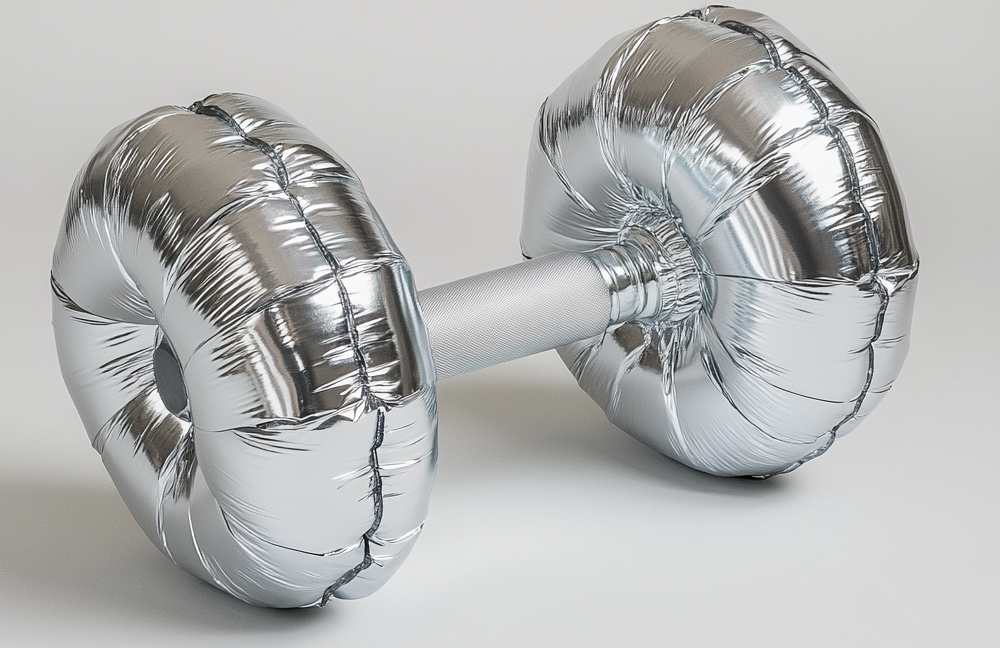Building muscle mass offers a wealth of benefits, from improving overall health and functional strength to boosting confidence and aesthetics. Whether you’re a beginner or looking to break through a plateau, this guide provides a comprehensive overview of how to optimize your muscle-building efforts. Here is your ultimate guide how to gain muscle mass. Let’s go!
1. The Benefits of Building Muscles
Muscle Supports Your Joints
Muscles play a vital role in stabilizing and protecting your joints. They absorb impact during activities like running and jumping, reducing stress on your knees, hips, and other joints. Strong muscles also improve your balance and coordination, decreasing the likelihood of injuries such as falls or ligament tears.
Boosted Metabolism
While the metabolic advantage of muscle tissue is often overstated, it’s true that muscles burn more calories than fat, even at rest. A pound of muscle burns approximately 13 calories per day, compared to 4 calories for a pound of fat. Additionally, the calorie-burning effect of regular workouts increases your overall daily energy expenditure.
Improved Blood Sugar Regulation
Muscle tissue uses glucose for energy, which helps maintain healthy blood sugar levels. This reduces the risk of long-term complications such as type 2 diabetes, cardiovascular disease, and nerve damage.
Enhanced Everyday Functionality
Building muscle improves your strength and stamina, making daily tasks like lifting groceries, climbing stairs, or playing with your kids easier. This functional strength translates to a better quality of life and greater independence as you age.
Increased Confidence
Muscles not only enhance your physical appearance but also improve your posture and confidence. Feeling strong and capable positively impacts how you perceive yourself and how others perceive you.
2. What is Muscle Hypertrophy and Why is it Important?
Muscle hypertrophy refers to the enlargement of muscle fibers in response to resistance training. This process involves:
- Mechanical Tension: Lifting heavy weights creates stress on your muscles, signaling them to adapt and grow.
- Muscle Damage: Small tears in muscle fibers occur during exercise, prompting the body to repair and rebuild them stronger.
- Metabolic Stress: The “pump” you feel during intense exercise results from metabolic byproducts that stimulate growth.
The foundation of hypertrophy is progressive overload – consistently challenging your muscles with increased resistance, volume, or intensity. This doesn’t mean lifting heavier every session but finding ways to push your limits over time. It is a foundational concept for muscle growth.
3. The 10 Principles to Gain Muscle Mass
1. Maximize Muscle Building With Protein
Building muscle requires a positive protein balance. This means you need to consume more protein than your body breaks down daily. Aim for 1 gram of protein per pound of body weight, distributed across meals. For example (160-pound individual):
- 8 oz chicken breast (42g)
- 1 cup cottage cheese (28g)
- 2 eggs (12g)
- Glass of milk (8g)
- 2 oz peanuts (14g)
2. Eat More (and Healthy)
A caloric surplus is essential for muscle growth. Use this formula to calculate your daily calorie needs:
- Basic Calorie Needs: Weight (lbs) × 12
- Activity Adjustment: Add calories burned during exercise (e.g., strength training = minutes × 5).
- Surplus: Add 500 calories for weight gain.
Focus on nutrient-dense foods like whole grains, lean proteins, healthy fats, and vegetables. Incorporate calorie-dense snacks like nuts, avocados, and full-fat dairy to meet your daily goals. Keep away from unhealthy snacks like cereals and convenience food.
3. Compound Exercises
Compound exercises, such as squats, deadlifts, pull-ups, and bench presses, should form the backbone of your workouts. These multi-joint movements recruit multiple muscle groups, enabling you to lift heavier weights and stimulate more growth.
While isolation exercises (like biceps curls) have their place, prioritizing compound movements leads to better overall muscle development.
You will find an extensive list of compound and isolated exercises in our exercise database (link). The same exercises are also available in our iPhone app (link)


4. Train Heavy
Heavy lifting is crucial for building strength and mass. Incorporate low-rep (3-5 reps) sets for major lifts like squats and bench presses. Combine this with moderate-rep (8-12 reps) sets to target hypertrophy.
Example:
- Start your workout with 4 sets of 3-5 reps using heavy weights.
- Follow with 3 sets of 8-12 reps for accessory exercises.
This approach builds strength while promoting muscle size.
5. Have a Drink Prior Workout
Drinking a protein-carbohydrate shake 30-60 minutes before your workout can enhance protein synthesis.Studies confirm that pre-workout shakes increase amino acid uptake in muscles due to improved blood flow.
Example Shake
- 10-20g whey protein
- 30-40g carbohydrates (e.g., banana, apple juice)
- 1 tsp olive oil (optional for healthy fats)
6. Take Time to Recover
Training every day to the point of exhaustion is counterproductive. Overtraining leads to fatigue and hinders recovery. Instead:
- Limit workouts to 12-16 sets per session.
- Include active recovery or light movement on rest days.
- Reserve high-intensity sessions for 3 times per week.
7. Eat Carbs After Your Workout
Post-workout carbs replenish glycogen stores and enhance recovery. Insulin release from carb consumption also slows protein breakdown, supporting muscle repair.
Carb Examples:
- Sweet potato
- Peanut butter sandwich
- Sports drink
8. Challenge Yourself with Progressive Overload
Progressive overload involves gradually increasing the demands on your muscles. This doesn’t always mean adding weight. You can:
- Improve your form
- Increase reps or sets
- Decrease rest time between sets
- Perform slower reps to maximize control
Small, consistent improvements compound over time to drive significant growth.
9. Maximize Time Under Tension
Time under tension (TUT) refers to how long your muscles are under strain during a set. Slower reps increase TUT and stimulate more growth. Lift the weight quickly (1 second up). Lower it slowly (3 seconds down). This technique works for most exercises, including squats, deadlifts, pull-ups, and curls.
10. Proper Sleep and Recovery
Sleep is when your body repairs muscle damage and releases growth hormones. Aim for 7-9 hours of quality sleep per night. Create an optimal sleep environment by going to bed and waking up at the same time and keeping your room dark, cool, and quiet.
3. How Long Does It Take to Gain Muscle Mass?
Beginners: Untrained individuals can gain 1-2 pounds of muscle per month due to their body’s responsiveness to new stimuli.
Intermediate Lifters: Progress slows to about 0.5-1 pound of muscle gain per month.
Advanced Lifters: As you approach your genetic potential, gains become even slower—often just 1-2 pounds per year.
Remember, consistency and effort are key. Progress may slow, but it’s a sign that you’re reaching new levels of fitness.
Conclusion
Building muscle is about more than just hitting the gym. It’s a 24-hour commitment that includes strategic training, proper nutrition, and sufficient recovery. By following these principles, you can maximize your muscle growth and enjoy the journey of becoming stronger, healthier, and more confident. Embrace the process, track your progress, and watch your hard work pay off in both physical and mental benefits!





3 thoughts on “The Ultimate Guide to Gain Muscle Mass”
Comments are closed.